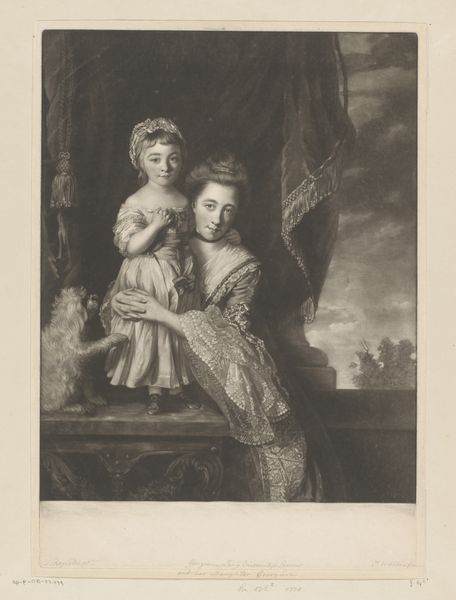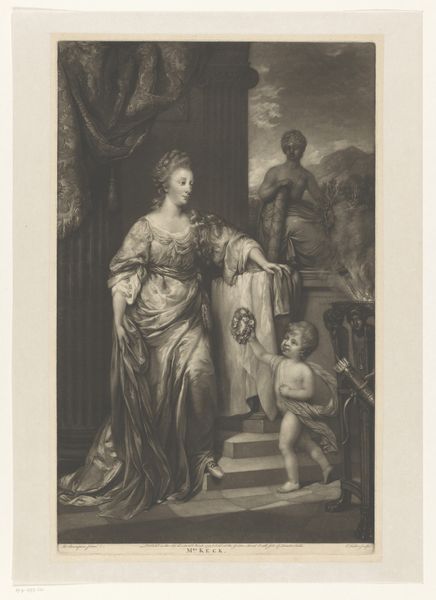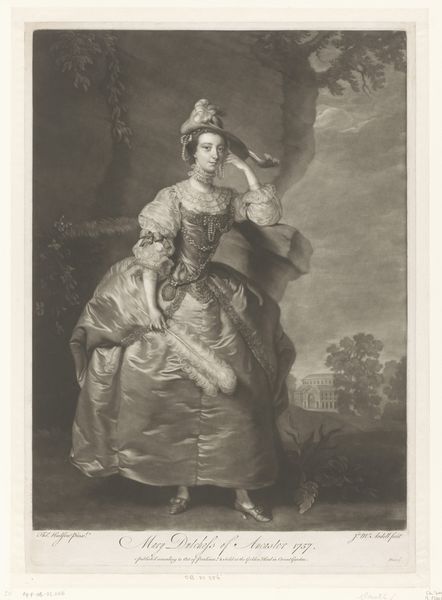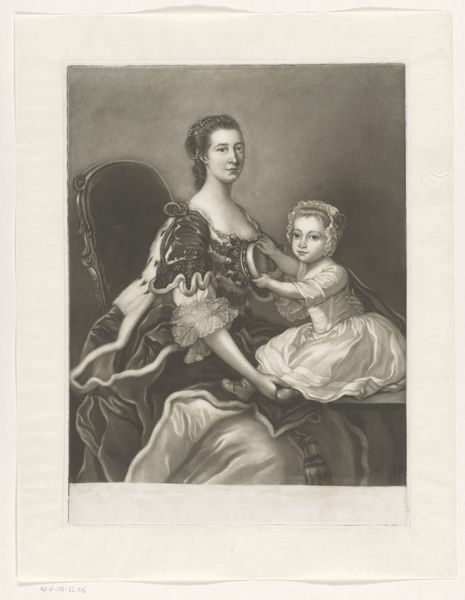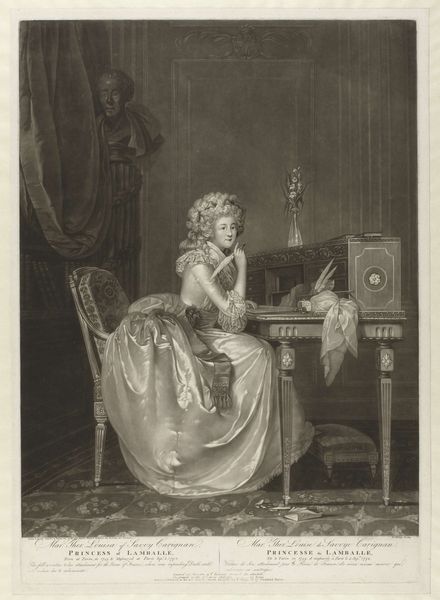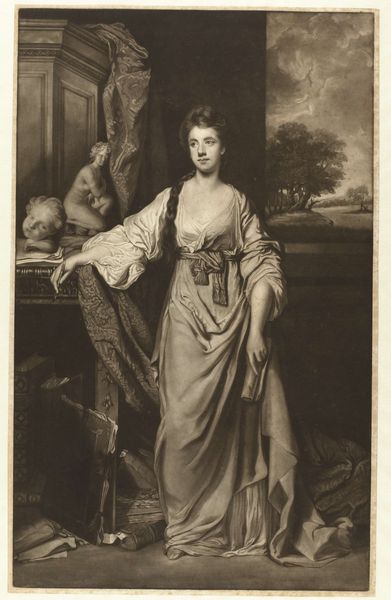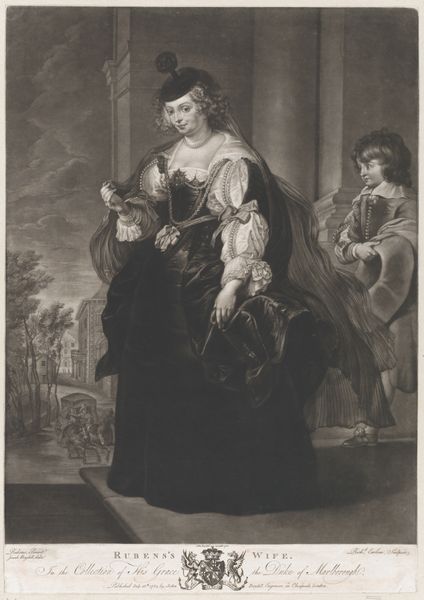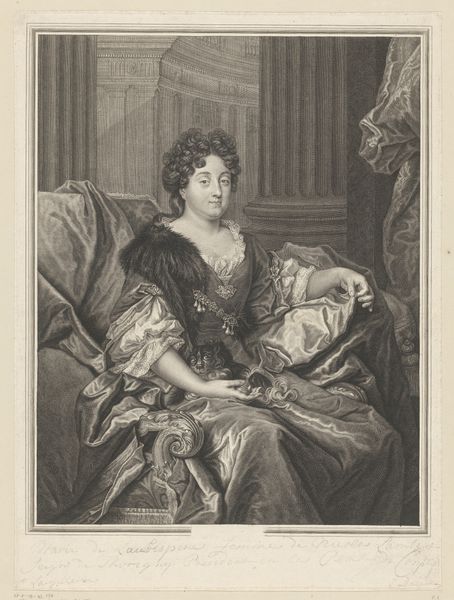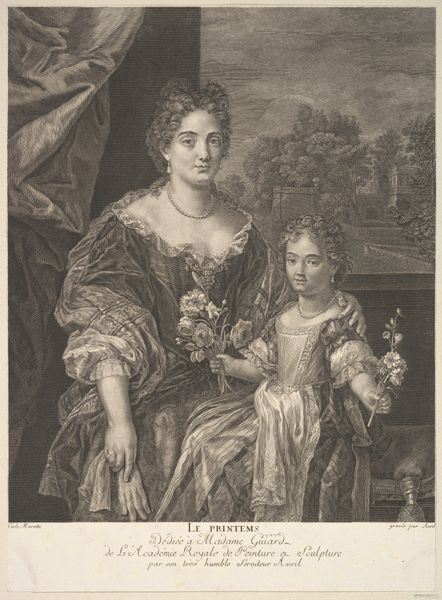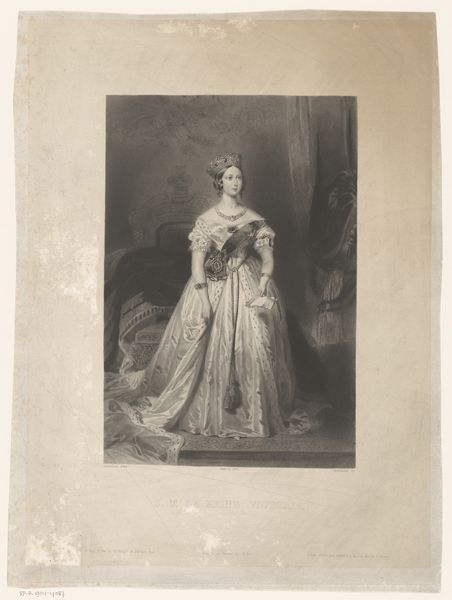
Portrait of Harriet, Countess Gower, and her Daughter Possibly 1832 - 1835
0:00
0:00
drawing, print
#
portrait
#
drawing
#
mother
# print
#
archive photography
#
historical photography
#
19th century
Dimensions: height 680 mm, width 454 mm, height 64 mm, width 452 mm
Copyright: Rijks Museum: Open Domain
Curator: This print is titled "Portrait of Harriet, Countess Gower, and her Daughter" made by Samuel Cousins, likely between 1832 and 1835. The Rijksmuseum holds this particular example in its collection. Editor: There's something so composed about this image. The stark contrast makes their faces seem to float above the darker mass of fabrics, especially her dress. Curator: Note how the architectural background – the pillar and drapery – serve to ennoble the Countess. She is staged, idealized as a pillar of society, while holding the future – her daughter. The letter in her hand might also suggest a correspondence, power through language. Editor: Right, but the heavy dress – you can almost feel the weight and sheen of the velvet, imagine the restrictive undergarments. It's not just about power, but about the material cost of that power, and the labor involved in its making, the sewing, the dyeing… It's luxurious but also oppressive. Curator: The child, though, she represents innocence, but also continuity of that social standing. Her small shoe placed delicately on the table echoes that future responsibility. Childhood becomes a symbol as well. It’s no accident that this mother-daughter image became popular among the elite during this period. It reinforces their place in the world. Editor: But then I wonder about Cousins' process. It is, after all, a print. How many impressions were made? Who owned these images and how did the distribution of such portraiture contribute to ideas about class and status? It's not just the Countess' dress; it's the reproduction of her image itself as a form of consumption. Curator: And perhaps consumption of symbols, ideals that resonate across time, these figures standing in as the symbols of motherhood, continuity, lineage, and nobility. They hold meanings beyond the materials or even the printing process, cultural memory is so powerful. Editor: Perhaps, but considering it was through these reproducible methods and materials that those ideas really started to circulate widely. The image becomes divorced from the subject herself. Ultimately, the medium *is* the message. Curator: Food for thought, definitely something to consider when viewing artwork! Editor: It gives you a lot to consider about art.
Comments
rijksmuseum about 2 years ago
⋮
Harriet, Countess Gower, was a dear friend of Queen Victoria and a member of her royal household. For a long time after the untimely death of the prince consort, Albert, the grieving Victoria tolerated no one other than Harriet in her proximity. Harriet is here shown with her daughter Elizabeth Georgiana. Lawrence’s large portraits of winsome young mothers with their children were highly esteemed.
Join the conversation
Join millions of artists and users on Artera today and experience the ultimate creative platform.

